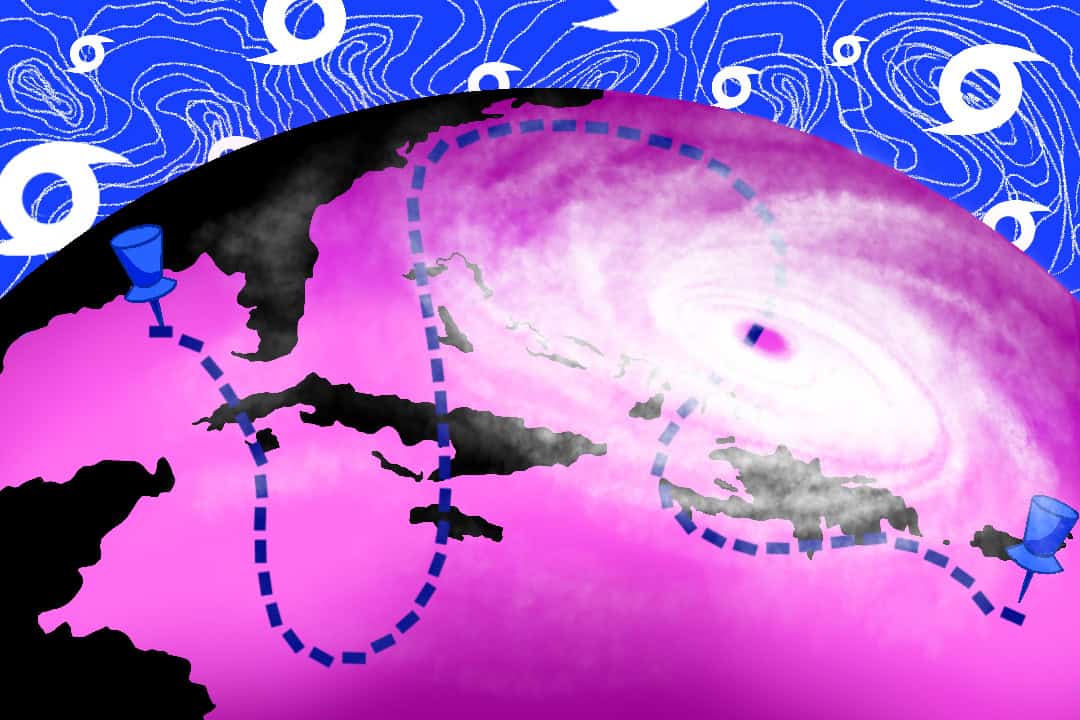On July 1, Hurricane Beryl passed through the southeast Caribbean, ripping doors, windows, and roofs off homes with winds exceeding 220 kilometres per hour.
The hurricane made landfall on Carriacou island in Grenada as a Category 4 storm, later intensifying to Category 5. The Saffir-Simpson Hurricane Wind Scale is used to measure hurricanes’ severity based on wind speed, with Category 5 being the highest.
The Pan American Health Organization (PAHO), a United Nations health agency responsible for the Americas, has confirmed a total of 11 deaths in St. Vincent and the Grenadines and Grenada together. At the time of PAHO’s July 16 report, 30 people were injured and two were missing.
When Beryl hit Jamaica next, PAHO reported four deaths, and 72 people injured. On July 3, the hurricane passed near the southern coast of the island and then continued toward the Gulf of Mexico, reaching Texas as a Category 1 hurricane.
Third-year student in human biology and member of the U of T West Indian Students’ Association, Erin Moo-Penn’s family was in Jamaica at the time of the hurricane. In an interview with The Varsity, she said, “My initial reaction was definitely worry and shock. It’s been a while since a hurricane of this magnitude hit the Caribbean.”
Moo-Penn noted that most of the destruction occurred in the southern part of the island, particularly along the shoreline.
“Zinc roofs came off schools and different entertainment establishments. Trees were down on certain roads. For almost two weeks, people across the island had no light, running water, or Wi-Fi,” she said.
Moo-Penn also mentioned that a seafood market in her city, which her family frequents, suffered significant damage. Meanwhile, Jamaica’s important landmark Bamboo Avenue — a two-and-a-half-mile-long bamboo forest in the southwest parish of St. Elizabeth — was completely uprooted.
She explained that hurricanes of this strength are rare. The last time a hurricane of similar magnitude to Beryl struck the southeast Caribbean was Hurricane Beryl 20 years ago.
This time, the hurricane gained its strength from unusually warm ocean waters, which are currently hotter than usual, even for September — the peak of hurricane season.
Beryl became the earliest hurricane of the 2024 Atlantic hurricane season to reach Category 5 intensity. The hurricane affected several countries, including Barbados, the Dominican Republic, Haiti, Mexico, and Trinidad and Tobago.
U of T’s response and UTMSU support
At the time of speaking, Moo-Penn had not heard of any student groups organizing hurricane relief fundraisers at the St. George campus. However, she believes U of T should play a role in spreading information about natural disasters that impact Caribbean students, who take up a large segment of the school’s population.
“U of T has a big platform and a strong voice to spread awareness about things students from other countries might not know about. Even just putting the word out there that this is what’s happening, that we feel for our students and want to share our support — this is something that U of T could do,” she said.
On the other hand, The University of Toronto Mississauga Students’ Union (UTMSU) launched a relief campaign from July 8–10 to support hurricane victims. In collaboration with Caribbean Connections UTM, UTMSU set up a donation drive in the UTM student centre where students could contribute relief items.
In an email to The Varsity, the union reflected that the campaign was “very successful.”
“We managed to spread awareness about the cause, which encouraged many students on campus to get involved. They donated relief items such as toiletries, non-perishable food, and first aid kits,” wrote the union.
After the donation period ended, Caribbean Connections UTM worked with Canadian non-profit community outreach organization, CARI-ON SVG Disaster Preparedness, to organize with the Consulate of Saint Vincent and the Grenadines in Toronto to make a shipment of supplies.



No comments to display.